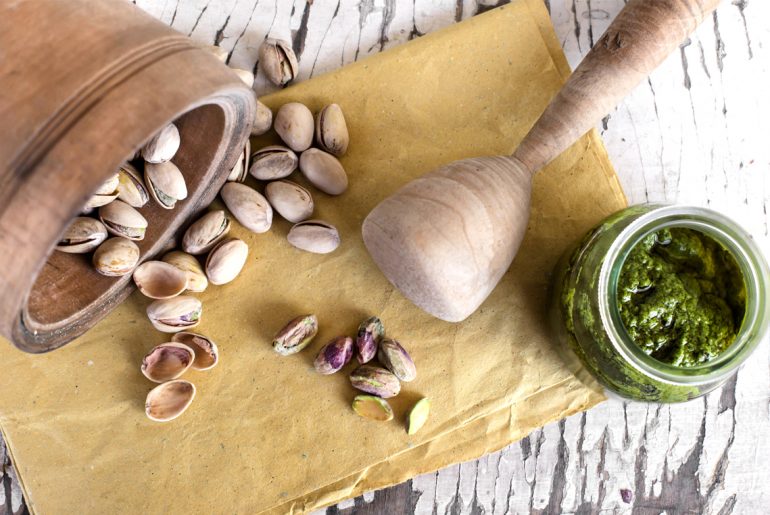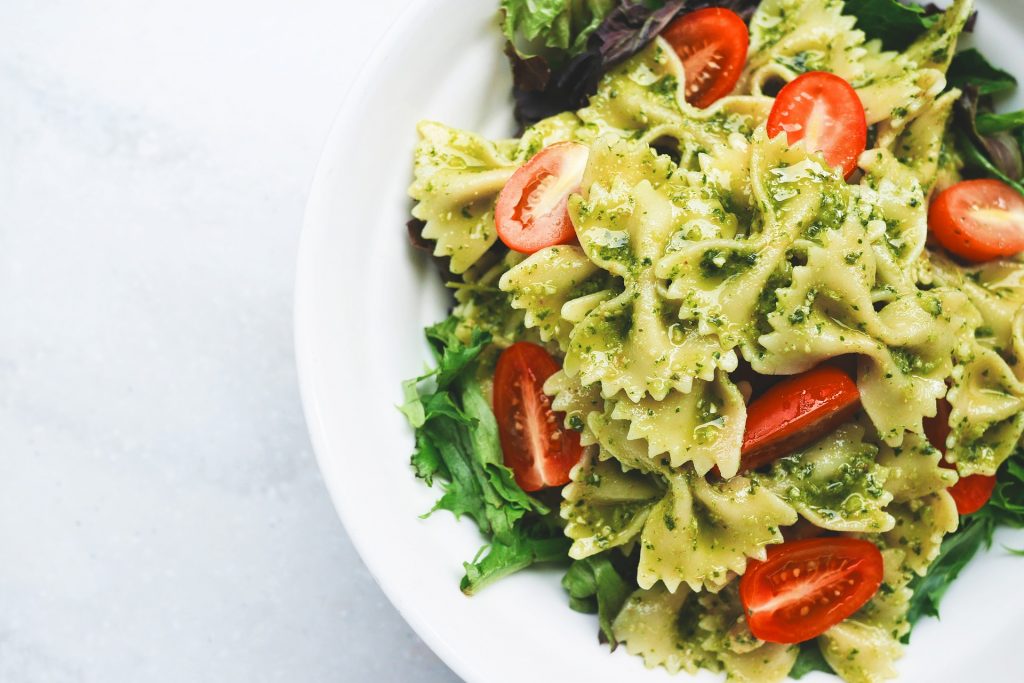If you haven’t peaked into your garden lately, you’ll likely find it blooming with basil! Which means one thing — it’s time for a million batches of fresh, homemade pesto.
(Also see these 12 tips for making your most perfect pesto)
The only thing I don’t dig about making basil is those pricey pine nuts. For this recipe, we’re going to skip them and add a slightly more cost saving nut — the pistachio. Plus, if you’re like me, I’m way more willing to just pop a few pistachios in my mouth as a snack. Pine nut leftovers? They might just go to waste.
Pistachios pair perfectly with a traditional pesto recipe. They add their slightly sweet, rich nutty flavor. And as with any pesto recipe, this one is quick, easy, and mixes up perfectly in a food processor or even a blender if that’s all you have. Brush it on bruschetta slices, or antipasto appetizer skewers. Toss it with pasta, or dunk it with fresh veggies. My personal favorite summer snack: fresh rinsed green beans, dunked in fresh salty, nutty pesto. Mmm! That’s what I’ll be eating the rest of summer. How about you?
Pistachio pesto
Makes about 1.5 cups
Ingredients
- 3 cups lightly-packed fresh basil leaves, chopped
- 1/3 cup shelled pistachios, chopped
- 3-4 cloves garlic, minced
- 1 tsp salt
- 1/2 tsp black pepper
- 1/2 cup extra-virgin olive oil
- 1/2 cup freshly grated Parmesan cheese
Directions
- In a food processor or blender, add basil, pistachios, garlic, salt, and pepper. Blend ingredients until still lightly chunky, while slowly drizzling in the olive oil.
- Pause the appliance and scrape down the sides as necessary. Pulse again as necessary until desired texture achieved.
- Serve immediately or refrigerated in a sealed container (keep the air from browning it if you use a Guac Keeper), for up to three days.
*Note: You can toss all of the ingredients into the food processor or blender without chopping, but chopping helps distribute the flavors more evenly, and it can keep your basil from turning brown a little longer. Since blender blades bruise pesto very easily, reduced time in the blender helps preserve color.
How to store pesto:
In the refrigerator: Keep pesto in a guac bowl to help keep air from turning it brown. Alternatively, pour a thin layer of olive oil on the surface of the pesto for a similar result.
In the freezer: Pesto keeps really well in the freezer. Freeze it in large batches like you would other sauces, or use an ice cube tray to divvy it up into smaller portions. Just fill a tray, freeze, then pop out the cubes and store in a freezer bag. Freeze until ready to use.
Also try this Turkey and cheese pesto panini.
For fun kitchen appliances, visit everybodyshops.com.





